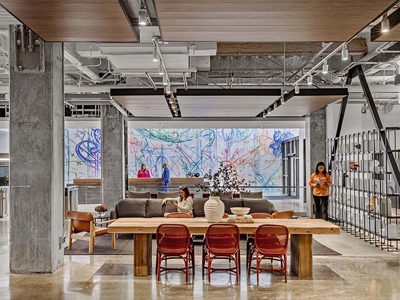

Watertown Exploratory Labs (WELL)
Elkus Manfredi Architects
Historic Art Deco reborn as life sciences campus.
1931 Art Deco HQ transformed into a LEED Gold life sciences campus, merging restored industrial character with contemporary labs, GMP manufacturing, a generous atrium, and improved energy and water performance.
Reimagining Western Electric’s 1931 headquarters, Watertown Exploratory Labs (WELL) sets a clear objective: preserve industrial heritage while engineering a high-performing, flexible life sciences campus. The scheme repositions the primary entrance and opens the building to the community with a new public realm, while internally creating a connected environment for research, collaboration and wellbeing. The retained structure, patina and crafted details anchor the project in its Art Deco legacy, even as it addresses today’s operational and regulatory demands for labs and offices.
The campus centres on an expansive atrium of more than 2,400 sq m that orchestrates social and knowledge exchange through varied seating, dining, a coffee bar, conference facilities and a 500 sq m fitness centre. Operable garage doors link to a tenants-only plaza; a second plaza invites the public and showcases commissioned murals by Kysa Johnson. A new four-level wing integrates GMP manufacturing across the lower floors with building-wide infrastructure above to support multi-tenant use. Extensive core and services upgrades, new loading and vertical circulation, and a refined material palette blend contemporary layers with an industrial Art Deco sensibility.
Performance outcomes underpin the project’s impact. Adaptive reuse cuts embodied carbon; early energy and water analysis guided whole-building simulation and targets. Outdoor water use is reduced by up to 50%, indoor by 21%; ASHRAE 55 comfort criteria are met; low-VOC materials and comprehensive submetering support ongoing optimisation; photovoltaics contribute to the grid. Judges commended the confident synthesis of historic character with a forward-looking science environment, noting energetic, interaction-driven interiors; and the overall execution was regarded as beautifully resolved and innovative in its sector.
The judges said: “a great example of repurposing a building and marrying old and new”